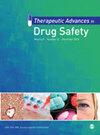Fetal exposure to isotretinoin in Saudi Arabia: a multicenter real-world data analysis from 2015 to 2020
IF 3.4
3区 医学
Q2 PHARMACOLOGY & PHARMACY
引用次数: 0
Abstract
Background:Despite its high efficacy in treating severe acne, isotretinoin is associated with serious side effects, including teratogenicity. However, the extent of isotretinoin exposure during pregnancy in Saudi Arabia remains unknown.Objectives:This study aims to quantify the extent of fetal exposure to isotretinoin in Saudi Arabia and to evaluate adherence to risk minimization measures approved by the Saudi Food and Drug Authority.Design:Retrospective cohort study.Methods:This multicenter retrospective study included a cohort of 6233 women of childbearing ages (WCBAs) who had received isotretinoin therapy between 2015 and 2020. Exposure to isotretinoin use was ascertained from patients’ electronic health records and was defined as any positive pregnancy test (urine or serum) or any diagnosis or procedure related to pregnancy occurring during the risk period. We defined the risk period starting from isotretinoin initiation until up to 30 days after the last prescription. We quantified the overall incidence proportion of fetal exposure to isotretinoin by dividing the number of pregnancy cases during the risk period by the total study sample of WCBAs.Results:The cohort predominantly included young females (20–29 years), with a mean age of 24 years. Only 5% of the WCBAs used contraceptives, and 10% have a record of pregnancy testing. During the risk period, 34 pregnancies were identified, yielding a cumulative pregnancy incidence of 5.6 per 1000 WCBAs. Pregnancy outcomes for exposed women were about 5% of births had defects, while abortions accounted for 14.3% of pregnancies.Conclusion:Our investigation shows an alarming incidence of fetal exposure to isotretinoin in Saudi Arabia, substantially surpassing global estimates. These results underscore a critical need for enhanced interventions and robust risk minimization strategies tailored to the distinct challenges faced by the Saudi Arabian population.沙特阿拉伯胎儿接触异维A酸的情况:2015年至2020年多中心真实世界数据分析
背景:尽管异维A酸对治疗严重痤疮有很高的疗效,但它也有严重的副作用,包括致畸性。目的:本研究旨在量化沙特阿拉伯胎儿暴露于异维A酸的程度,并评估遵守沙特食品药品管理局批准的风险最小化措施的情况。方法:这项多中心回顾性研究纳入了在2015年至2020年间接受过异维A酸治疗的6233名育龄妇女(WCBAs)。异维A酸使用暴露是通过患者的电子健康记录确定的,其定义是在风险期内发生的任何阳性妊娠检测(尿液或血清)或任何与妊娠相关的诊断或手术。我们将风险期定义为从开始使用异维A酸到最后一次处方后 30 天内。我们将风险期内的妊娠病例数除以WCBA研究样本总数,从而量化了胎儿暴露于异维A酸的总体发病比例。结果:队列中主要包括年轻女性(20-29岁),平均年龄为24岁。只有 5%的女工使用避孕药具,10%的女工有妊娠检查记录。在风险期内,共发现 34 例妊娠,每 1000 名 WCBA 中的累计妊娠发生率为 5.6 例。接触异维A酸的妇女的妊娠结果是,约5%的新生儿有缺陷,而流产占妊娠的14.3%。结论:我们的调查显示,沙特阿拉伯胎儿接触异维A酸的发生率令人震惊,大大超过了全球的估计值。这些结果表明,亟需针对沙特阿拉伯人口所面临的独特挑战,加强干预措施并制定强有力的风险最小化策略。
本文章由计算机程序翻译,如有差异,请以英文原文为准。
求助全文
约1分钟内获得全文
求助全文
来源期刊

Therapeutic Advances in Drug Safety
Medicine-Pharmacology (medical)
CiteScore
6.70
自引率
4.50%
发文量
31
审稿时长
9 weeks
期刊介绍:
Therapeutic Advances in Drug Safety delivers the highest quality peer-reviewed articles, reviews, and scholarly comment on pioneering efforts and innovative studies pertaining to the safe use of drugs in patients.
The journal has a strong clinical and pharmacological focus and is aimed at clinicians and researchers in drug safety, providing a forum in print and online for publishing the highest quality articles in this area. The editors welcome articles of current interest on research across all areas of drug safety, including therapeutic drug monitoring, pharmacoepidemiology, adverse drug reactions, drug interactions, pharmacokinetics, pharmacovigilance, medication/prescribing errors, risk management, ethics and regulation.
 求助内容:
求助内容: 应助结果提醒方式:
应助结果提醒方式:


